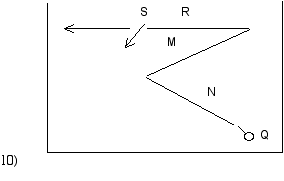Submitted by Ray Cook - March 13, 2000
Question: How does one write two dancers moving on a path at the same time and in the same spatial relationship, but changing their facing by the end of the path?
Ann says that the arrow with the wedge, as in Ex. 1 (RC1c in her Feb.10 posting), should be used when there are more than two people. She uses the double arrow when there are two people, as in Ex. 2 (A1 on Feb. 10).
I want the arrow with the wedge (Ex. 1) to be used when there are two or more people who do not change their facing. Then the double arrow can be used when there are two people who do change their facing, as in Ex. 3. The double arrow could also be used for more than two movers who change facing, as in Ex. 4.
Ann's notation shown in Ex. 5 here (A5 on Feb 10) still does not show visually the idea of moving on the same path. I say the notation on the staff tells you which way to travel first.
Ann asked if Ex. 6 (RC4c on Feb 10) indicates a leap. Yes it does.
Re: Ann's indications shown in Ex. 11 and Ex. 12 (A8 and A9 on Feb 10) and my indications shown in Ex. 13 and 14 (RC11b and 11c on Feb 10).
The approximate sign is not needed in any of the indications. For instance, only the plus sign is needed in Ex. 11 and only the increase sign is needed in Ex. 13. Neither the plus nor the increase sign tells you how much more to circle or turn, so the approximate sign is no help.







No comments:
Post a Comment